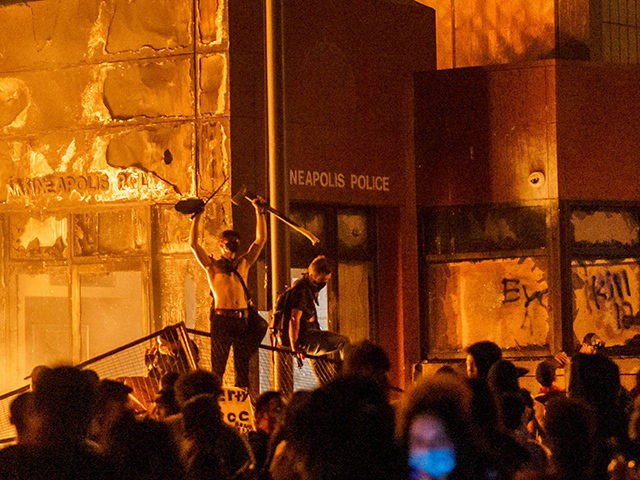The death of George Floyd at the hands of the Minneapolis police on Memorial Day, sparked a call for reforming police practices that quickly morphed into demands to “defund police” — an idea that the Wall Street Journal editorial board said on Monday could make matters worse.
A political drive to defund police risks a return to the high-crime era of the 1960s and 1970s that damaged so many American cities. Millennials and minorities in big cities have benefited tremendously from the hard work of Democratic mayors and police chiefs 20-30 years ago to reduce crime. Yet the progressives who now run most big cities have pushed relaxed enforcement of ‘victimless’ crimes, and now they want to go further.
The Journal said it shows in the current political atmosphere “how quickly bad events trigger a rush to bad policies,” including the massive cuts to police budgets proposed by Los Angeles Mayor Eric Garcetti and the Minneapolis City Council, which said it will dismantle the police force in that city, even over the objections of Mayor Jacob Frey.
The Minneapolis City Council and the Democrat leaders of other cities should do a little homework before making any rash decision about its police forces, according to the Journal:
Even before the recent riots, crime had been surging this year in many of America’s big cities. In Minneapolis, car-jackings were up 45 percent, homicides 60 percent, arson 58 percent and burglaries 28 percent from January through May 30 compared to the same period last year. Violent crime overall was 16 percent higher and property crime 20 percent higher than recent low points in 2018.
In New York City, shootings had increased 18 percent, burglaries 31 percent and car-jackings 64 percent. There were about 1,279 more burglaries, 1,078 more cars stolen and 57 more shooting victims during the first five months of this year than during the same period last year. Almost all of these were outside of Manhattan’s business district.
In San Francisco, homicides before the riots this year had increased by 19 percent, burglaries by 23 percent and arson by 39 percent over last. Philadelphia reported a 28 percent increase in commercial burglaries, 51 percent in shootings, 22 percent in auto theft and 28 percent in retail theft from last year. Residential burglaries and larceny have fallen in many places, but that’s no doubt because people were at home.
The Journal also criticized another leftwing law enforcement policy that is increasing crime rates — letting prisoners out of jail to prevent the spread of the coronavirus.
In Minneapolis, property and violent crime increased by 33 percent and 29 percent, respectively, through the middle of March when Hennepin County reduced its jail population by 40 percent.
The editorial board wrote:
It’s impossible to prove cause and effect, but the line between liberal law enforcement policies and the crime spike is hard to ignore. Take New York City’s new bail law that gives nonviolent offenders a get-out-of-jail-free card. In January a man who stuck up six banks in two weeks was repeatedly released after each arrest.
“I can’t believe they let me out,” the man told a detective.
“Crime in Minneapolis has been climbing since Mayor Frey entered office in 2018 and started pushing more relaxed law enforcement,” the Journal editorial board wrote, adding that minority communities are being most affected by these policies. “As police have eased up, violent crime has increased nearly twice as much in the minority third precinct in Minneapolis as city-wide since 2018.”
The Journal wrote that in New York’s Harlem neighborhood murders had risen 160 percent over last year, burglaries are up 56 percent, and carjackings have more than doubled.
“Law enforcement is mainly a state and local obligation, and in many cities now the defunders have power,” the Journal editorial board wrote. “Poor communities will be the victims if they succeed.”
Follow Penny Starr on Twitter

COMMENTS
Please let us know if you're having issues with commenting.